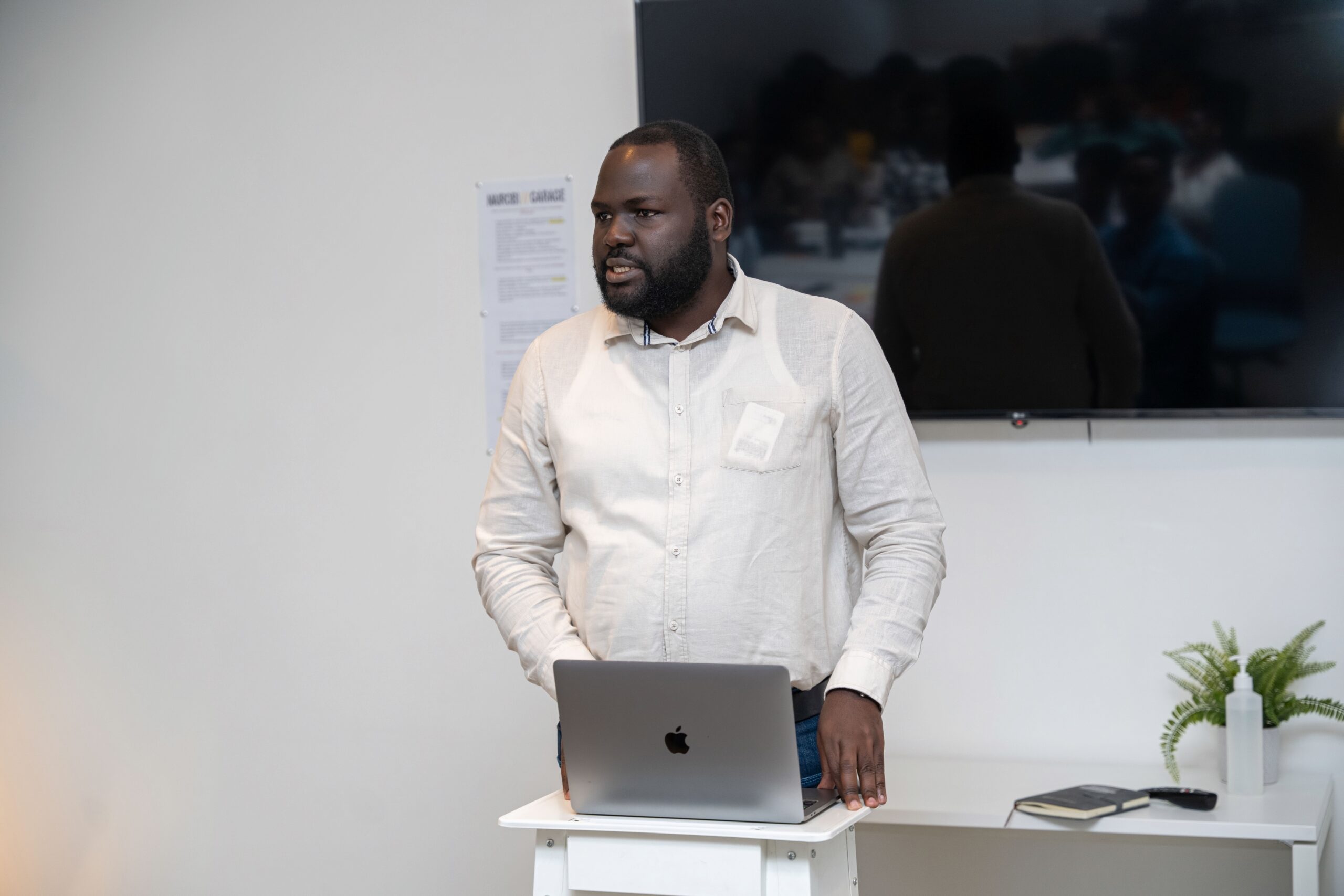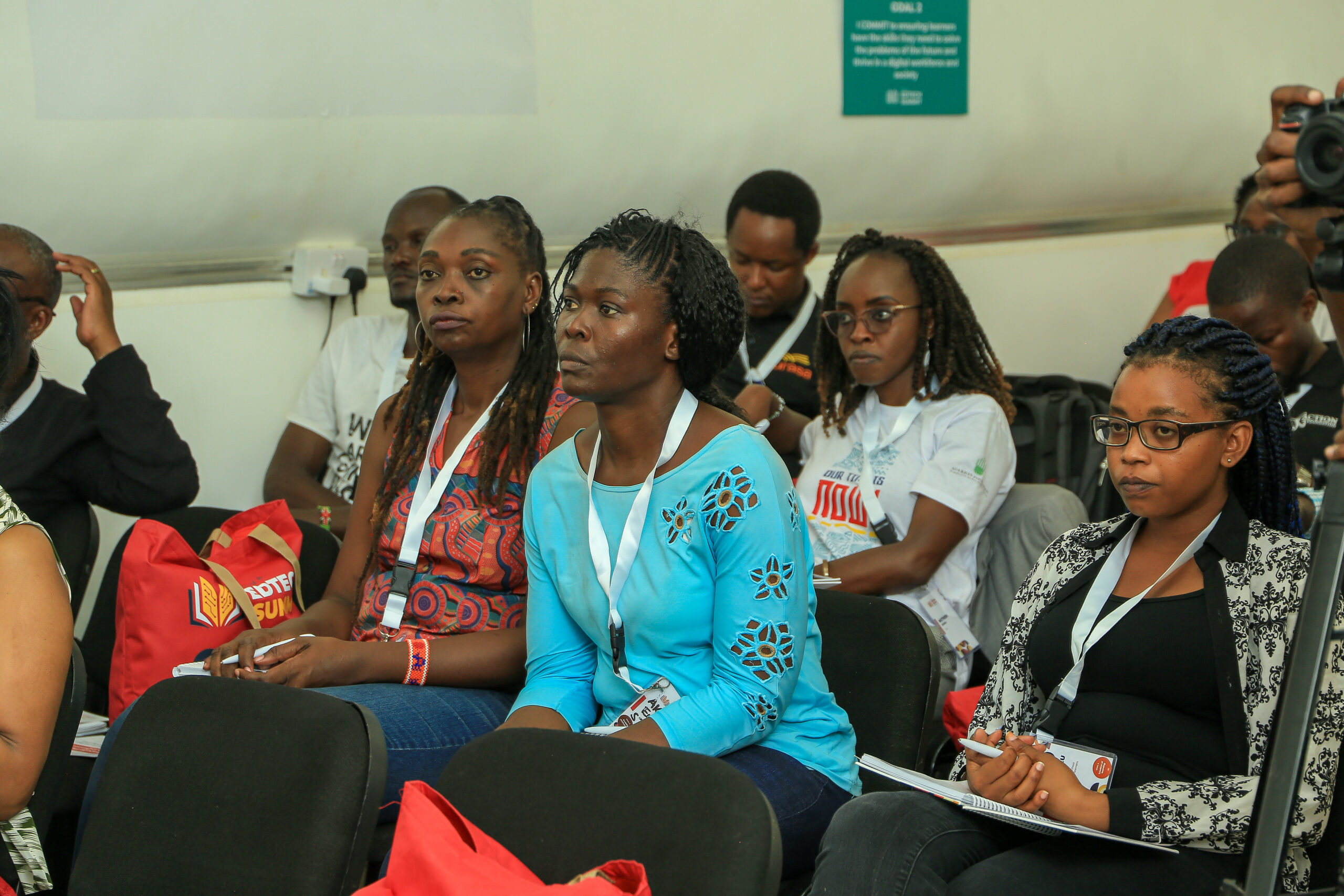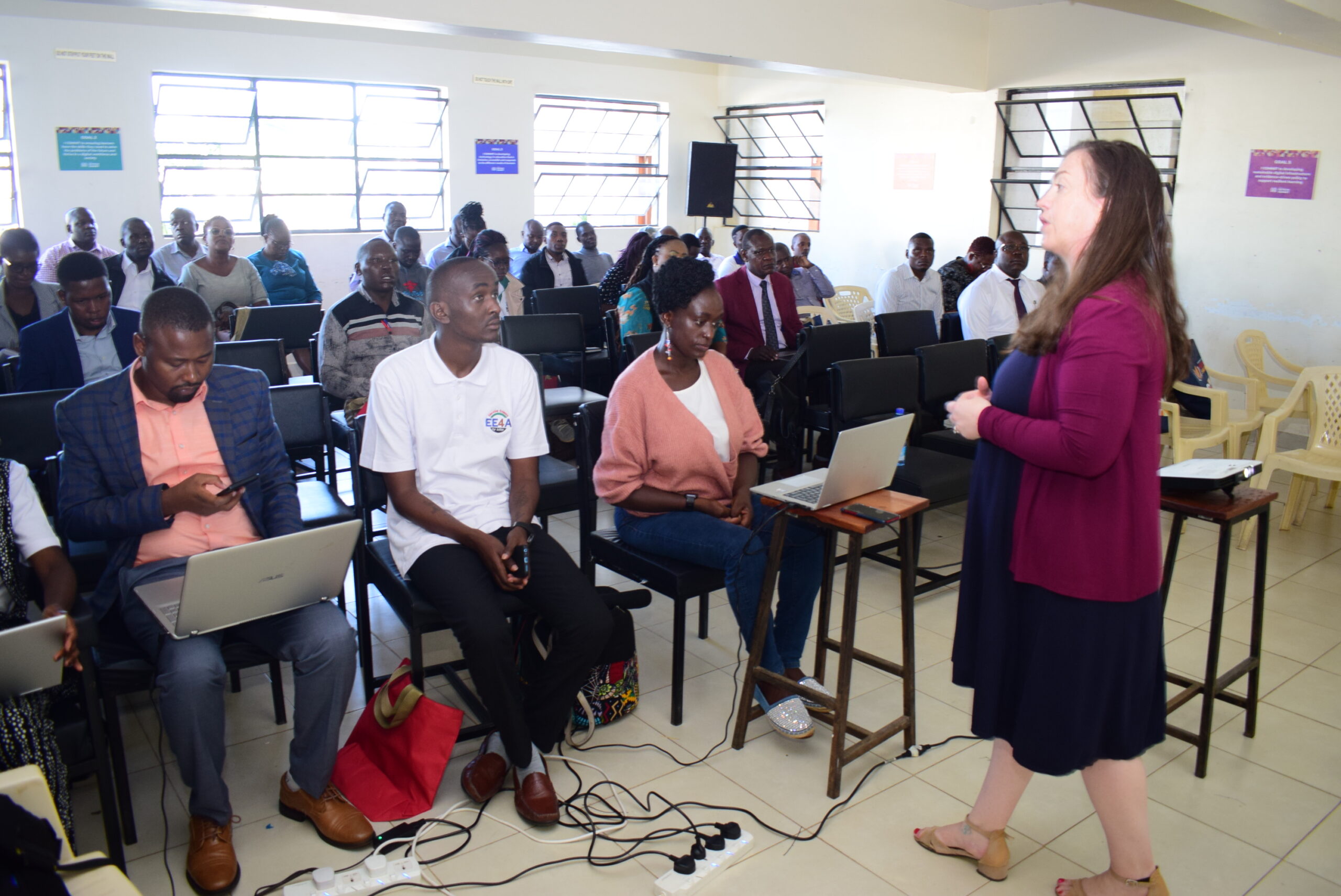Having gone through the first four EdTech Collective Action Fridays workshops, it was time for the team to meet for the final Goal, centered on developing Sustainable Digital Infrastructure and Evidence-Driven Policy to Support Resilient Learning. It was a meeting that brought together experts from various fields to explore how Policy and Infrastructure are affecting adaptable resilient learning solutions.
This workshop therefore was important as we got to identify the enablers and barriers to achieving this target but first, we got an opportunity to know how we got here through Jennifer Otieno, (EdTech East Africa Founder and CEO) who took us through the inception of the workshops. Apart from the key shapers which can be looked at as the past, the present, and the future, this conversation was represented at the Kenya Tech Summit 2022, and the Collective Action Fridays workshops, it will also be had at the Kenya EdTech Summit 2023.

Taking us down the tech road in Africa, she focused mainly on how it has been applied in teaching. Kenya, in particular, traces its journey to the late 90s when according to the Presidential Working Party for Education Reforms, teachers began receiving training in ICT integration in teaching and learning, and schools began to receive basic ICT infrastructure, including projectors and laptops for teachers. It was however in June 2006 that the first National ICT Strategy for Education and Training was introduced by the Ministry of Education, In partnership with the state, non-governmental and civil society groups then began to implement activities to foster digital learning in Kenya, key among them being to improve digital infrastructure.
The journey to digitize learning in Kenya did not pick up faster as it wasn’t until 2013 that the government started the first large-scale digital teaching and learning initiative named the Digital Literacy Programme (DLP). This was aimed at children in grades 1-3 in public schools. This project according to findings submitted by The Presidential Working Party on Educational Reforms was revamped in early 2016 having failed to attract more interested parties. As the year came to an end, the DLP was scaled to a national level with the intention of integrating ICT into teaching and learning.
The Covid-19 pandemic required education systems to adopt new operational approaches having failed to attract more interested parties. As the year came to an end, the DLP was scaled to a national level with the intention of integrating ICT into teaching and learning. It wasn’t until the time when Covid-19 happened that Kenya saw a rise in digitally enabled teaching and learning. According to Brunel University, the Covid-19 pandemic required education systems to adopt new operational approaches and this further escalated already existing problems of limited internet access, inadequate learning facilities, and a lack of enough trained teachers among other problems.
In this article titled Teachers’ Use of ICT in Implementing the Competency-based Curriculum in Kenyan Public Primary Schools, Julius Mureithi and Jin Eun Yoo state that UNICEF estimated that close to 20 million learners spread across the country were out of school because of COVID-19 in Kenya as governments were forced to close schools to minimize the spread of the deadly virus.
ENABLERS AND BARRIERS

To help us take a clear look at the two issues presented, Joan Mwachi, EdTech East Africa’s Collective Action Goals facilitator, divided the participants into two groups. One group discussed the enablers and barriers to building a digital infrastructure in Kenya and the other, the enablers and barriers to evidence-driven policy. These two questions made way for robust discussions as different persons went ahead to define the terms used and then made their contributions in the context of education in Kenya.
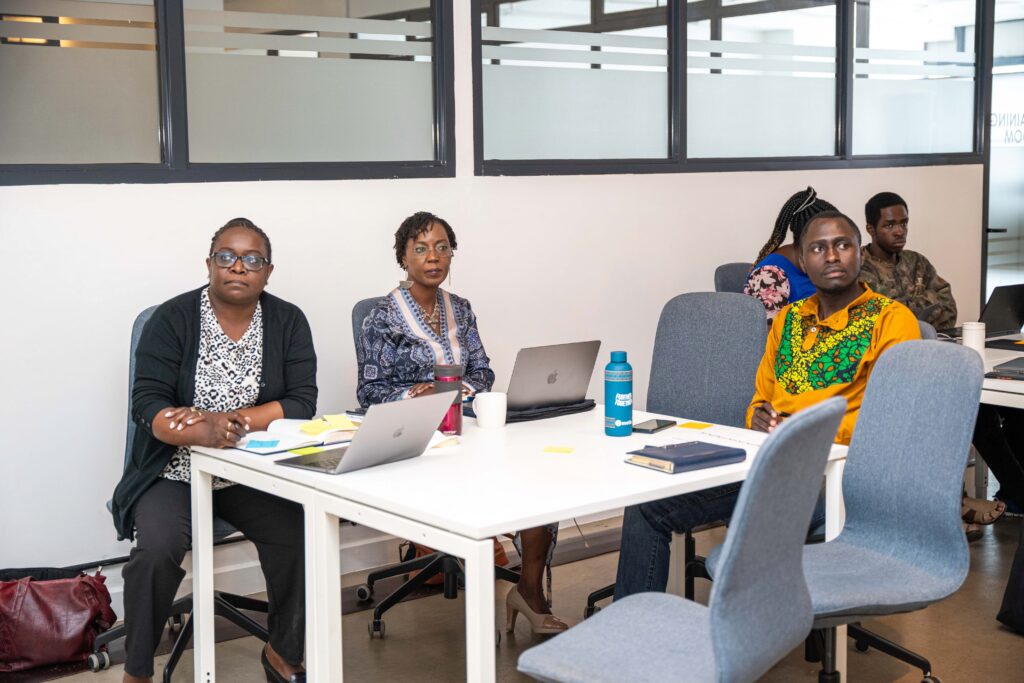
Availability of funds is essential for building and sustaining digital infrastructure as it ensures that students are provided with the necessary tools, resources, and training to thrive in the digital age, ultimately improving the quality of education and preparing students for the future workforce. However, studies have shown that infrastructure and ICT equipment shortages were among the challenges facing the implementation of ICT in primary schools in Kenya.
According to a study that was carried out in 2015 targeting 40 primary schools and 450 teachers, it was noted that 94% of the schools did not have ICT equipment, all schools in the study had a shortage of classrooms and only two private schools had functional computer laboratories. The members agreed therefore that there is a need for actors in education to come together and help bolster the digital infrastructure and evidence-driven policy.

Accessibility and connectivity also came out as playing a crucial role in the growth of digital infrastructure and evidence-driven policy in Kenyan education, as they enable various stakeholders to leverage technology to improve the quality of education and make informed decisions. This is because it allows for connectivity between students and teachers giving them access to online learning materials. Information through digital platforms also enables parents and guardians to stay informed about their children’s education. They can monitor progress, communicate with teachers, and participate in their child’s learning journey more actively.

Good government policies that focus on infrastructure development, digital literacy, data privacy, and evidence-driven decision-making help to foster the growth of digital infrastructure and improve the quality of education in the country. Such policies as suggested, should be designed with the goal of ensuring that all students have access to a high-quality education. They should prioritize investments in digital infrastructure, such as reliable internet connectivity, electricity access, and the provision of computing devices (e.g., laptops or tablets) to schools and students. This ensures that students and educators have access to the necessary tools for digital learning.

Tied to this is political goodwill that leads to increased allocation of resources for digital infrastructure in education. This includes funding for hardware like computers and tablets, the development of software for educational purposes, and internet connectivity in schools. When policymakers prioritize these investments, it creates an enabling environment for the growth of digital infrastructure.
Political leaders can create policies and regulations that support the integration of technology into education. These policies may include incentives for private sector investment in education technology and the development of guidelines for using digital tools effectively in the classroom. A supportive policy environment encourages the adoption of digital infrastructure.

It was also noted that collaboration is a great enabler as it brings different players both from the government and the private sector to work together through the creation of policies and regulations that support the integration of technology into education, and the provision of digital infrastructure.
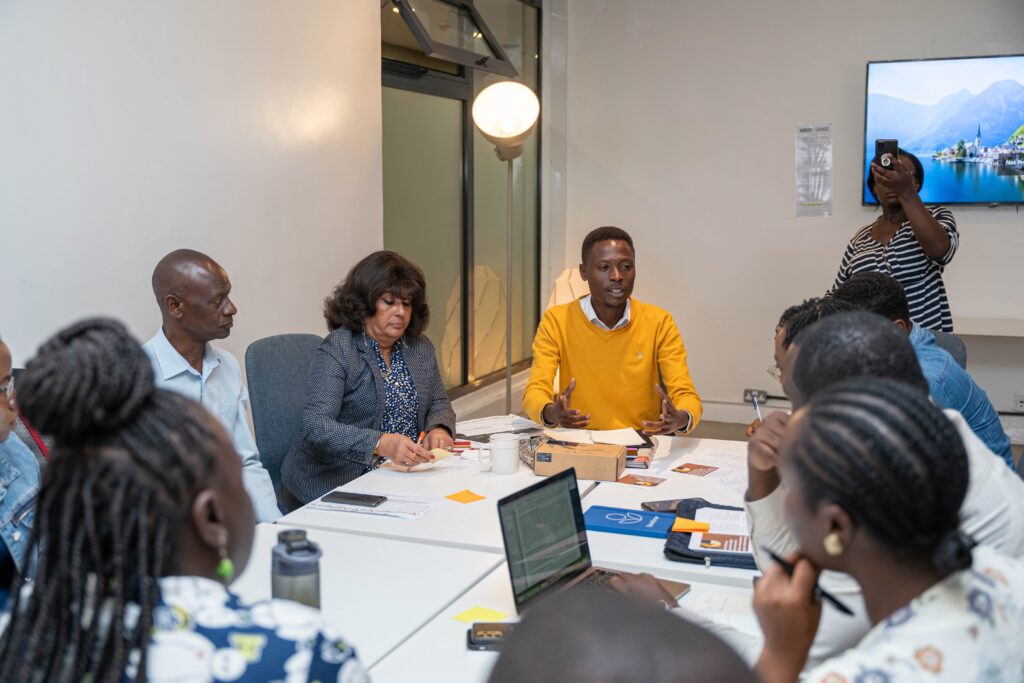
Teacher perception and capacity were also mentioned as both an enabler and barriers in advancing digital infrastructure. Mureithi and Yoo (2021), demonstrated that ICT in education helps create opportunities for learners to develop 21st Century skills but this depends on the digital literacy of teachers (UNESCO, 2012). Studies on the capacity of teachers in primary schools in Kenya show that, despite the policy formulation for ICT in education and financial investment, the integration of technology in Kenyan classrooms remains low.
According to them, studies on how perception affects the integration of ICT in education show that what teachers think about the use of technology affects their acceptance and subsequent application in their activities. In a study to assess teachers’ beliefs, attitudes, self-efficacy, computer competency, and age, they found out that younger teachers had a highly positive attitude toward technology. This finding they add, could be attributed to the younger teachers having received technology training in the teacher training colleges. It was therefore agreed that teachers’ attitudes should be addressed so as to get the desired results.

The presence of data and consumer awareness was raised as an enabler as information like student performance, attendance, teacher effectiveness, and resource allocation will assist both the government, education institutions, and policymakers to identify areas of improvement, allocate resources more effectively, and tailor educational programs to meet specific needs.
BARRIERS:
The disconnect between policymakers and academia was seen as a great barrier to digital infrastructure and evidence-driven policy as it contributes to its inefficacy in different ways. A study by Kenyatta University on E-Learning policy-making processes in Marsabit Distance Learning Centre quotes McGrath saying that policies that have not been informed by good evidence and analysis result in becoming a victim of the ‘Law of unintended consequences’.
One of the ways is through misalignment of goals where policymakers may set lofty goals and objectives for digital infrastructure and evidence-driven policies without fully understanding the practical challenges and limitations faced by educators and schools. This misalignment can lead to unrealistic expectations and resource allocation. Policymakers may also formulate policies and initiatives without consulting teachers, administrators, and other education professionals who work directly in schools. Such goals and policies become difficult for teachers to implement.

Insufficient training and support of teachers and education practitioners is also another barrier. Formulating policies and initiatives without consulting teachers, administrators, and other education professionals who work directly in schools can result in policies that are out of touch with the realities of the classroom and are difficult to implement.
Another challenge is that of resource constraints. When an institution is allocated inadequate funding, it inhibits the work to be done and undermines the success of the initiatives.
Socio-cultural factors came into play as another hindrance to digital infrastructure and evidence-driven policies in Kenya’s education system. Income and location can determine who has access to the internet and digital devices. This can lead to a digital divide where students from disadvantaged backgrounds are left behind.
Cultural attitudes can shape how education is perceived. In some cultures, traditional forms of education are highly valued, and there may be resistance to adopting digital methods. Parents and communities may prioritize traditional teaching methods over digital ones. There are communities that also do not consider it important to educate a girl child therefore girls and young women may face additional barriers in accessing digital infrastructure and pursuing education in STEM fields, further perpetuating gender disparities.
Recommendations to the PWPER from the EdTech Taskforce

A task force of over 20 digital learning organizations representing research, practice, innovation, and funding submitted six recommendations to the presidential Working Party on Education reforms. The task force, represented at this workshop by James Ong’ang’a, from Longhorn Publishing, tabled the following recommendations, three of which made it to the final report.
- Strengthen the foundation for inclusive digital learning
- Augment the enabling policy environment for digital learning to occur
- Leverage technology to promote inclusion and enhance universal access to education
- Use technology to transform the way learning happens and improve learning outcomes
- Empower all learners with digital literacy skills to help them thrive in a digital workforce and society
- Increase and optimise EdTech financing
CONCLUSION:
Developing sustainable digital infrastructure and evidence-driven policy to support resilient learning in Kenya requires different actors to come together. The first is to create accessible digital infrastructure, with widespread internet connectivity and reliable power sources, to ensure that remote learning can thrive across the country. Policymakers should prioritize data collection and analysis to inform educational decisions, using evidence-based insights to tailor learning programs effectively.
Furthermore, fostering partnerships with technology providers and educational institutions can help create innovative solutions for diverse learning needs. This cannot be done by an individual institution and EdTech creates an avenue where different players come together to discuss how best to achieve this for learners in Kenya.
